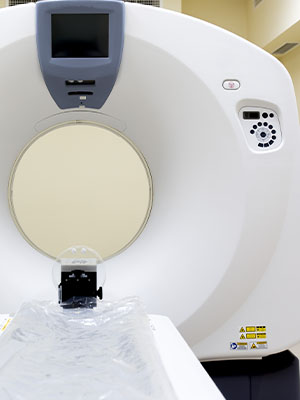Medical imaging offers an inside view of your body for the purpose of diagnosis and guiding treatment plans. While an x-ray may seem like such a quick procedure that results in a single image being captured, this single high-quality image will drive your medical team’s course of action. At Touchstone Imaging, we know how important the images that are produced are to the outcome of your treatment plan and your overall health and wellness. Join us in today’s post as we discuss just how important your medical imaging exams are and how we can help ensure you get the best results.
Image-guided treatment is the use of medical imaging before, during, and after medical interventions. Images from x-ray, CT scan, MRI, ultrasound, and other modalities are used in the planning, performing, and evaluating the process. Let’s take a deeper look at each step to better understand how medical imaging is used to guide treatment plans.
Planning
Medical imaging is used to plan medical treatment by confirming a diagnosis or highlighting the specifics of an injury. Medical imaging itself does not provide a diagnosis, however, the interpretations from a diagnostic procedure can confirm a provider’s suspicions, provide insight into the problem, or rule out a condition that might be causing your symptoms. Typically a scan is done because of your medical provider has a reason to warrant it or is looking for something specific. As a diagnostic tool, medical imaging procedures may also be done to establish a baseline before treatment is begun to help monitor effectiveness. For instance, if a tumor is detected, imaging will likely be done prior to radiation or chemotherapy. Medical imaging can help make surgeries more precise and may even offer non-surgical options for treatment.
 Performing
Performing
Treatment is guided by medical imaging results in a few different ways. Image-guided treatments are those that are performed while medical imaging is being used. For instance, ultrasound-guided biopsies allow the medical provider to watch the ultrasound to guide the needle for a more accurate and less invasive biopsy option. Some procedures including ablations, radiation, and embolizations are performed while CT scans are being performed. This imagery can help guide the treatment as well as monitor its effect on organs and blood flow for much better patient outcomes.
Evaluating
Medical imaging is used as an on-going tool to monitor the effectiveness of treatment. Popular uses include repeat MRI after radiation to evaluate tumor sizes and repeat x-rays to monitor the treatment of a broken bone or tuberculosis. When evaluating treatment plans based on imaging, the most current scan results are generally compared to the initial ones to monitor for any change — either progress or deterioration. When the treatment plan is evaluated, it can be adjusted as needed.
If your medical provider orders a medical imaging procedure to be completed, the quality of the images matters. As you can see, the images will be interpreted and will guide your treatment plan. To ensure an accurate diagnosis and effective treatment plan is used, trust the high-quality diagnostic images produced at Touchstone Imaging. We have medical imaging facilities throughout the United States, visit us online to find a Touchstone facility near you.



